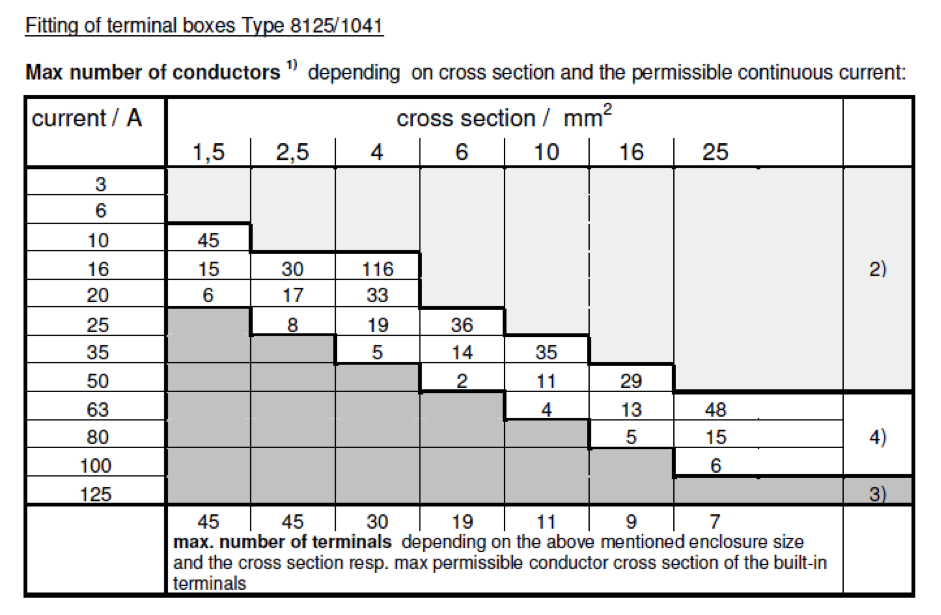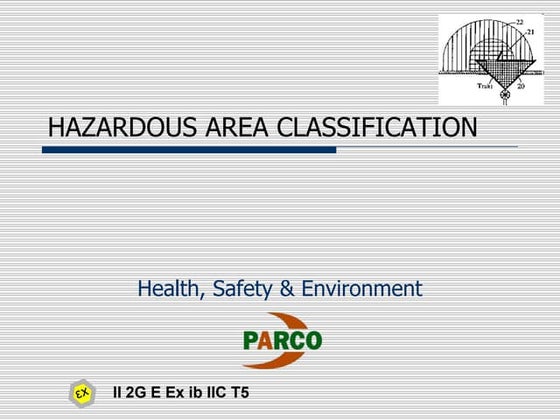The smart Trick of Roar Solutions That Nobody is Talking About
The smart Trick of Roar Solutions That Nobody is Talking About
Blog Article
The Definitive Guide for Roar Solutions
Table of ContentsRoar Solutions - The FactsThe smart Trick of Roar Solutions That Nobody is Talking AboutA Biased View of Roar Solutions
In order to secure installations from a potential explosion an approach of analysing and categorizing a possibly unsafe location is required. The objective of this is to guarantee the appropriate choice and installation of tools to ultimately stop an explosion and to guarantee safety and security of life.
(https://anotepad.com/note/read/5qf9qbmr)
No tools must be installed where the surface temperature level of the devices is higher than the ignition temperature of the provided threat. Below are some common dust unsafe and their minimum ignition temperature. Coal Dust 380C 225C Polythene 420C (melts) Methyl Cellulose 420C 320C Starch 460C 435C Flour 490C 340C Sugar 490C 460C Grain Dirt 510C 300C Phenolic Material 530C > 450C Aluminium 590C > 450C PVC 700C > 450C Residue 810C 570C The probability of the hazard existing in a concentration high enough to trigger an ignition will certainly differ from area to place.
In order to identify this danger an installment is split into locations of danger depending upon the amount of time the dangerous is present. These areas are referred to as Zones. For gases and vapours and dirts and fibres there are three areas. Area 0 Area 20 A dangerous atmosphere is extremely likely to be existing and may exist for extended periods of time (> 1000 hours per year) or even constantly Zone 1 Area 21 A hazardous atmosphere is possible but unlikely to be present for extended periods of time (> 10 450 C [842 F] A classification of T6 suggests the minimum ignition temperature level is > 85 C [185 F] Dangerous location electric equipment maybe made for usage in greater ambient temperature levels. This would suggested on the rating plate e.g. EExe II C T3 Ta + 60C( This implies at 60C ambient T3 will not be surpassed) T1 T1, T2, T3, T4, T5, T6 T2 T2, T3, T4, T5, T6 T3 T3, T4, T5, T6 T4 T4, T5, T6 T5 T5, T6 T6 T6 A T Class rating of T1 means the maximum surface area temperature level produced by the tool at 40 C is 450 C. Assuming the connected T Class and Temperature level ranking for the tools are suitable for the area, you can always utilize an instrument with a much more rigorous Division score than needed for the location. There isn't a clear answer to this question. It really does depend upon the kind of equipment and what fixings require to be lugged out. Equipment with particular test treatments that can not be executed in the area in order to achieve/maintain 3rd event score. Need to return to the manufacturing facility if it is prior to the equipment's service. Area Fixing By Authorised Employee: Complicated screening might not be required nonetheless details procedures may require to be followed in order for the devices to keep its 3rd event score. Authorized employees should be employed to perform the job correctly Repair must be a like for like replacement. New element have to be considered as a direct substitute requiring no unique testing of the equipment after the repair is complete. Each tool with a harmful score should be examined independently. These are laid out at a high level listed below, yet for even more in-depth information, please refer directly to the standards.
How Roar Solutions can Save You Time, Stress, and Money.
The devices register is an extensive database of equipment records that consists of a minimum set of fields to recognize each item's place, technical criteria, Ex-spouse classification, age, and environmental information. This info is crucial for monitoring and handling the equipment effectively within hazardous areas. On the other hand, for routine or RBI tasting inspections, the grade will be a mix of In-depth and Close examinations. The ratio of Comprehensive to Close assessments will be figured out by the Devices Threat, which is evaluated based on ignition danger (the chance of a source of ignition versus the possibility of a flammable atmosphere )and the harmful location category
( Area 0, 1, or 2). This variation will likewise influence the resourcing demands for work preparation. Once Great deals are specified, you can develop tasting strategies based upon the sample size of each Great deal, which refers to the number of arbitrary devices products to be examined. To determine the needed sample dimension, two try this site aspects require to be reviewed: the dimension of the Lot and the category of assessment, which shows the degree of initiative that should be used( decreased, typical, or increased )to the evaluation of the Lot. By integrating the category of inspection with the Lot size, you can after that establish the proper rejection standards for an example, meaning the allowed number of defective things found within that example. For even more information on this procedure, please describe the Energy Institute Standards. The IEC 60079 common advises that the maximum interval between examinations should not surpass 3 years. EEHA inspections will also be conducted beyond RBI projects as component of set up upkeep and devices overhauls or repairs. These examinations can be credited toward the RBI example sizes within the impacted Great deals. EEHA examinations are carried out to identify faults in electric tools. A heavy racking up system is important, as a solitary tool may have numerous faults, each with differing degrees of ignition threat. If the consolidated rating of both examinations is much less than two times the fault score, the Whole lot is considered appropriate. If the Lot is still thought about unacceptable, it has to go through a full examination or justification, which may set off more stringent inspection protocols. Accepted Great deal: The reasons for any faults are identified. If an usual failing mode is located, added tools may require evaluation and repair. Mistakes are classified by seriousness( Safety, Stability, Housekeeping ), ensuring that urgent issues are assessed and resolved promptly to alleviate any impact on safety and security or operations. The EEHA database ought to track and tape-record the lifecycle of faults in addition to the restorative actions taken. Executing a robust Risk-Based Examination( RBI )strategy is important for making certain conformity and safety and security in managing Electrical Devices in Hazardous Areas( EEHA) (eeha training). Automated Mistake Scoring and Lifecycle Administration: Easily manage mistakes and track their lifecycle to boost evaluation accuracy. The intro of this support for risk-based examination additionally enhances Inspectivity's position as a best-in-class service for regulative compliance, along with for any type of asset-centric inspection use situation. If you have an interest in finding out extra, we welcome you to ask for a demo and discover exactly how our service can change your EEHA monitoring procedures.
3 Simple Techniques For Roar Solutions

In terms of eruptive danger, a harmful location is an atmosphere in which an eruptive ambience exists (or may be expected to be present) in quantities that require special precautions for the building and construction, installment and use tools. eeha training. In this short article we discover the obstacles encountered in the office, the threat control measures, and the called for expertises to function securely
It is a consequence of modern life that we make, keep or handle a variety of gases or liquids that are considered flammable, and a variety of dusts that are deemed combustible. These materials can, in particular problems, form explosive ambiences and these can have significant and awful effects. A lot of us are familiar with the fire triangular get rid of any type of one of the 3 components and the fire can not take place, yet what does this mean in the context of unsafe locations? When breaking this down into its simplest terms it is essentially: a mix of a particular quantity of release or leakage of a particular substance or material, combining with ambient oxygen, and the presence of a source of ignition.
In many circumstances, we can do little regarding the levels of oxygen airborne, but we can have significant influence on sources of ignition, as an example electrical devices. Harmful areas are documented on the unsafe area classification illustration and are identified on-site by the triangular "EX LOVER" indicator. Here, amongst various other vital information, areas are divided right into three types depending upon the hazard, the likelihood and duration that an eruptive atmosphere will certainly exist; Zone 0 or 20 is deemed one of the most dangerous and Zone 2 or 22 is considered the least.
Report this page